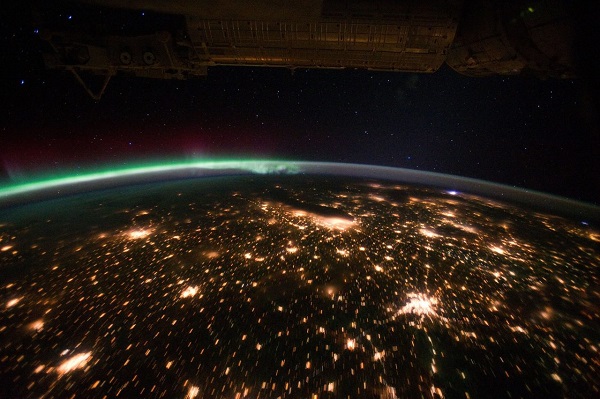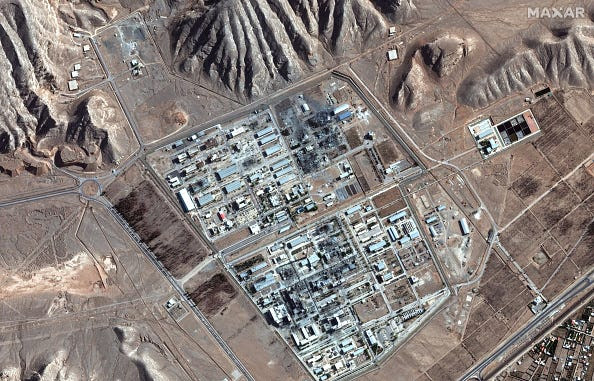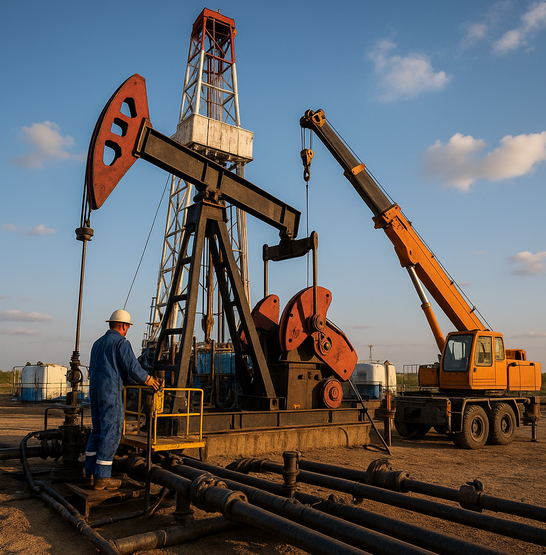Energy
Energy wise, how do you even describe 2024?

From the Frontier Centre for Public Policy
By Terry Etam
There still remains a full court press in North America/western Europe among certain socioeconomic classes to “just stop oil” and the like. While we as an industry in many ways remain in our foxholes, and the opponents of hydrocarbons roam freely, looking to criminalize if at all possible any positive dialogue about the value of hydrocarbons.
Huh. Look at that. It’s been ten years since I started writing about energy. Not that that particular trivia interests anyone, why would it, however it is interesting to look back at the impetus for writing and how that has changed.
Ten years ago, as I worked in a communications department for an energy infrastructure business that did not like publicity of any kind whatsoever, it began to dawn on me how dangerous were the habits that formed thereof, and how far reaching the consequences. As but one example, anti-pipeline activists were all over Washington DC like ants on a mound, pressuring the government to kill the Keystone XL pipeline. They swarmed social media and a motivated army spread the gospel like wildfire, truth be damned.
The pipeline industry looked at the energy ignoramuses and kind of just sniggered, for they knew they were right – pipelines were and are the safest and most reliable form of liquid/gas transportation, forming a global industrial backbone we can’t even imagine living without – and there seemed a largely prevailing attitude in industry that these pipeline facts were so glaringly obvious that everyone would figure it out. I still hear the chortling: “Look at those lunatics, protesting pipelines without knowing they’re standing on one that’s been there for 40 years.”
Yeah, well, the lunatics did pretty well didn’t they… Keystone XL is a distant memory, the US Mountain Valley Pipeline is years late and twice over budget, and even TMX is only now limping into service at what, about 700 times over budget and equally late… I shudder to think what kind of back room deals were cut with extremists who promised TMX would never be built and yet now stand silent. If we had a conservative prime minister at the helm now trying to complete TMX, I would bet my ears that the going wouldn’t be as protest-lite as it is now.
Ten years ago, the impetus was to fill a void in public energy knowledge because there wasn’t much of an effective voice that was doing so. If there was, there was scant evidence of any success. So that was kind of fun, going for the low hanging fruit of explaining energy nuances to a public that cared about nothing except utility bills and what it cost to fill up the family beast.
But that excitement faded as the energy industry’s inability to articulate its value was overwhelmed by the likes of Greta Thunberg, a Swedish teen that was hoisted onto the shoulders of cagey mobs, and thrust into the public consciousness as some sort of Jesus-like figure. At that point, the battlefield was completely overrun, and the oil/gas industry seemed to head underground and wait for the storm to pass. What a mistake.
There still remains a full court press in North America/western Europe among certain socioeconomic classes to “just stop oil” and the like. While we as an industry in many ways remain in our foxholes, and the opponents of hydrocarbons roam freely, looking to criminalize if at all possible any positive dialogue about the value of hydrocarbons. But. The anti-fossil fuel people are so busy working on Orwellian regulations/policies/roadmaps that they haven’t looked over their shoulders at the storm clouds brewing, the ones that hydrocarbon producers always knew would arrive.
As seven out of eight billion people on earth strive to live like the west does, the inevitable is happening: global demand for energy, in all forms, is soaring, and absolutely no one wants to take a step backwards in terms of standard of living. The world wants to add a billion air conditioners, because those things are life-transforming (see: any modern glass-cube high rise residential/commercial building, modern hospitals/seniors centers, etc), and the comfy west wants to add an estimated $250 billion per year in data centers because we can and it looks fun.
We haven’t even begun to figure out how to rewire the world for an energy transition even if we used energy consumption from 20 years ago as the starting point; today, we can’t keep up using all our resources. Every year, we set new records for solar installations, wind installations, coal consumption, oil consumption… and new natural gas infrastructure is being built around the world backed by multi-decade contracts. The fight over nuclear continues in the oddly ridiculous way it now goes, with countries within the same jurisdiction (EU, for example) shutting down nuclear facilities (Germany) on safety or environmental (?) grounds while countries right beside them add new ones. In the US, the same craziness is happening within the country; places like New York shuttering nuclear facilities while other parts of the country develop new ones.
What makes energy commentary challenging these days is that we’ve become desensitized to such insanity, we are pickled in it, and treat it as just the regular public discourse. I mean really. Look at Germany’s self inflicted damage in shutting down its nuclear plants on the grounds of safety. How much safer are Germans if Belgium builds new ones next door?
We’ve become used to the blaring theme “electrify everything” when we can clearly see, if we choose to look, that electrifying anything at all is becoming more challenging, with grid operators all over the place issuing warnings about potential energy shortages/rolling blackouts or brownouts/falling grid reliability.
AI is coming. Like a freight train. No one is prepared for it. Anyone paying attention is sounding the alarm bells: Power consumption is going to go through the roof. And that is in addition to a world that continues to set new energy usage records relentlessly, a trend that seems unstoppable and huge even before AI.
The storm clouds are there, they are growing, and no one wants to look up.
And then we need to set this insanity against a truly mind-boggling global geopolitical framework that looks like something out of Monty Python.
China is an amazing object, like a parallax, that looks completely different depending on your vantage point. By that I mean: energy transition advocates, the ones that ‘just know’ that net-zero 2050 is inevitable and simply requires more ‘policy’, point to China as a green hero, installing more solar than any other country, at breakneck pace. At the same time, the opposite camp that ‘just knows’ that net-zero 2050 has no chance due to the sheer challenge point out that China is constructing new coal-fired power plants at a rate of two per week.
Both are right. So are the people that rejoice at how solar panels have become so much cheaper due to China’s manufacturing prowess, as are the people that point out the staggering environmental footprint of building all that stuff behind a somewhat opaque curtain.
The people that herald the rise of China’s EV adoption are right, but so are the people that fear China’s control of most of the critical mineral/metal supply/processing chain.
India is a rising behemoth. The EU still thinks it runs the world. The US’ leadership is a gym full of blindfolded shouting people running at full speed. Canada thinks it is the world’s conscience, to the extent it is still thinking at all, building foreign and local policy on the notion that Canadians are the global good guys, a selfless hero running around the globe’s stages eagerly saying politically correct things while back home the wheels are coming off. Watch us impale our economy on a stick just to show the world that no one can possibly be morally superior. Russia is a vodka-soaked-yet-clever power monger with some thousand-year-old chip on its shoulder and enough bullets to fill a million Ladas. The Middle East remains the Middle East, reliably distributing both petroleum products and anger to every corner of the world…
The world’s biggest economies are so far in debt that they don’t know what to do, and we must painfully watch central bankers craft new policies and plans under the faulty pretense that they do know what they’re doing. The US is adding a trillion dollars worth of debt every hundred days, and the gurus of monetary policy are watching the economy with the wisdom and effectiveness of a time-forgotten goat-herder buying a cell phone before he’s found out what electricity is.
The future is never certain. Obviously. There will be black swans, rare events that have major global seismic repercussions. Terrorists are pretty good at destabilizing the world with a flick of the wrist, doing more damage than a tsunami, but then there are tsunamis as well. And all sorts of human hijinks that can throw a spanner in the works quite easily because we are all one step away from snapping.
There will be new wars, apparently, the peace dividend nothing but a dead deer on the side of the road. Political polarization is so severe that at any given time some substantial percent of the population believes that if their political enemy gets elected that ‘the future of the nation is at stake’. In the US two very ancient people are leading these charges, and every single American I talk to says, in a burst of frustration, “How the hell did we get here, and why are those two the only choices?”
And all of us that pay attention to energy ask the very same questions about the energy world. We watch economic powerhouses like Germany and California screw themselves into the ground with remarkable efficiency. We can see these problems arising. We listen to grid operators that warn of coming instability instead of shouting them down or tossing them out and replacing them with people that toe the line.
The energy industry is, despite all the madness, making actual strides in reducing emissions, developing new types of energy, developing carbon sequestration options, working on hydrogen programs, integrating with all sorts of green technology. It’s tough slogging, because most attempts are met with chants of “greenwash, greenwash” by people that don’t want progress, they want fossil fuels dead and gone. As their vision of a solution, they throw soup on famous paintings. The world stands in awe, like watching a naked drunk lurch across a freeway, oblivious to his surroundings.
One good thing about the world of energy though, compared to the utter lunacy of the global political/geopolitical/sociological mess, is that we can see fairly clearly where energy is going. The crazed experiments, the building of castles to the sky, will slow to a pace that makes sense and is digestible. Global demand for oil, natural gas, and it looks like even coal will stay strong for several decades at least. Nuclear power will have a renaissance, and new technologies or battery breakthroughs will enter the scene at a rate that the world can handle. It won’t be pretty or linear or without strife, but that’s how it will be. People won’t live without cheap reliable energy.
So if you’re in the energy business, take heart – in the world of political theatre, reality is whatever you can get away with convincing the world that it is. In the world of energy, fuel is fuel, availability is availability, and we can at least count on the fact that despite all the handwringing and grandiose policy that reality can’t be evaded. It might be small comfort but at least it’s real.
Terry Etam is a columnist with the BOE Report, a leading energy industry newsletter based in Calgary. He is the author of The End of Fossil Fuel Insanity. You can watch his Policy on the Frontier session from May 5, 2022 here.
Automotive
Federal government should swiftly axe foolish EV mandate

From the Fraser Institute
Two recent events exemplify the fundamental irrationality that is Canada’s electric vehicle (EV) policy.
First, the Carney government re-committed to Justin Trudeau’s EV transition mandate that by 2035 all (that’s 100 per cent) of new car sales in Canada consist of “zero emission vehicles” including battery EVs, plug-in hybrid EVs and fuel-cell powered vehicles (which are virtually non-existent in today’s market). This policy has been a foolish idea since inception. The mass of car-buyers in Canada showed little desire to buy them in 2022, when the government announced the plan, and they still don’t want them.
Second, President Trump’s “Big Beautiful” budget bill has slashed taxpayer subsidies for buying new and used EVs, ended federal support for EV charging stations, and limited the ability of states to use fuel standards to force EVs onto the sales lot. Of course, Canada should not craft policy to simply match U.S. policy, but in light of policy changes south of the border Canadian policymakers would be wise to give their own EV policies a rethink.
And in this case, a rethink—that is, scrapping Ottawa’s mandate—would only benefit most Canadians. Indeed, most Canadians disapprove of the mandate; most do not want to buy EVs; most can’t afford to buy EVs (which are more expensive than traditional internal combustion vehicles and more expensive to insure and repair); and if they do manage to swing the cost of an EV, most will likely find it difficult to find public charging stations.
Also, consider this. Globally, the mining sector likely lacks the ability to keep up with the supply of metals needed to produce EVs and satisfy government mandates like we have in Canada, potentially further driving up production costs and ultimately sticker prices.
Finally, if you’re worried about losing the climate and environmental benefits of an EV transition, you should, well, not worry that much. The benefits of vehicle electrification for climate/environmental risk reduction have been oversold. In some circumstances EVs can help reduce GHG emissions—in others, they can make them worse. It depends on the fuel used to generate electricity used to charge them. And EVs have environmental negatives of their own—their fancy tires cause a lot of fine particulate pollution, one of the more harmful types of air pollution that can affect our health. And when they burst into flames (which they do with disturbing regularity) they spew toxic metals and plastics into the air with abandon.
So, to sum up in point form. Prime Minister Carney’s government has re-upped its commitment to the Trudeau-era 2035 EV mandate even while Canadians have shown for years that most don’t want to buy them. EVs don’t provide meaningful environmental benefits. They represent the worst of public policy (picking winning or losing technologies in mass markets). They are unjust (tax-robbing people who can’t afford them to subsidize those who can). And taxpayer-funded “investments” in EVs and EV-battery technology will likely be wasted in light of the diminishing U.S. market for Canadian EV tech.
If ever there was a policy so justifiably axed on its failed merits, it’s Ottawa’s EV mandate. Hopefully, the pragmatists we’ve heard much about since Carney’s election victory will acknowledge EV reality.
Daily Caller
Trump Issues Order To End Green Energy Gravy Train, Cites National Security


From the Daily Caller News Foundation
By Audrey Streb
President Donald Trump issued an executive order calling for the end of green energy subsidies by strengthening provisions in the One Big Beautiful Bill Act on Monday night, citing national security concerns and unnecessary costs to taxpayers.
The order argues that a heavy reliance on green energy subsidies compromise the reliability of the power grid and undermines energy independence. Trump called for the U.S. to “rapidly eliminate” federal green energy subsidies and to “build upon and strengthen” the repeal of wind and solar tax credits remaining in the reconciliation law in the order, directing the Treasury Department to enforce the phase-out of tax credits.
“For too long, the Federal Government has forced American taxpayers to subsidize expensive and unreliable energy sources like wind and solar,” the order states. “Reliance on so-called ‘green’ subsidies threatens national security by making the United States dependent on supply chains controlled by foreign adversaries.”
Dear Readers:
As a nonprofit, we are dependent on the generosity of our readers.
Please consider making a small donation of any amount here.
Thank you!
Former President Joe Biden established massive green energy subsidies under his signature 2022 Inflation Reduction Act (IRA), which did not receive a single Republican vote.
The reconciliation package did not immediately terminate Biden-era federal subsidies for green energy technology, phasing them out over time instead, though some policy experts argued that drawn-out timelines could lead to an indefinite continuation of subsidies. Trump’s executive order alludes to potential loopholes in the bill, calling for a review by Secretary of the Treasury Scott Bessent to ensure that green energy projects that have a “beginning of construction” tax credit deadline are not “circumvented.”
Additionally, the executive order directs the U.S. to end taxpayer support for green energy supply chains that are controlled by foreign adversaries, alluding to China’s supply chain dominance for solar and wind. Trump also specifically highlighted costs to taxpayers, market distortions and environmental impacts of subsidized green energy development in explaining the policy.
Ahead of the reconciliation bill becoming law, Trump told Republicans that “we’ve got all the cards, and we are going to use them.” Several House Republicans noted that the president said he would use executive authority to enhance the bill and strictly enforce phase-outs, which helped persuade some conservatives to back the bill.
-

 Automotive2 days ago
Automotive2 days agoAmerica’s EV Industry Must Now Compete On A Level Playing Field
-

 Business2 days ago
Business2 days ago‘Experts’ Warned Free Markets Would Ruin Argentina — Looks Like They Were Dead Wrong
-

 Alberta1 day ago
Alberta1 day agoAlberta school boards required to meet new standards for school library materials with regard to sexual content
-

 International2 days ago
International2 days agoSecret Service suspends six agents nearly a year after Trump assassination attempt
-

 Business2 days ago
Business2 days agoCarney government should recognize that private sector drives Canada’s economy
-

 Alberta1 day ago
Alberta1 day agoFourteen regional advisory councils will shape health care planning and delivery in Alberta
-

 Environment23 hours ago
Environment23 hours agoEPA releases report on chemtrails, climate manipulation
-

 Bruce Dowbiggin1 day ago
Bruce Dowbiggin1 day agoThe Covid 19 Disaster: When Do We Get The Apologies?







